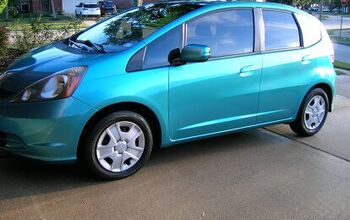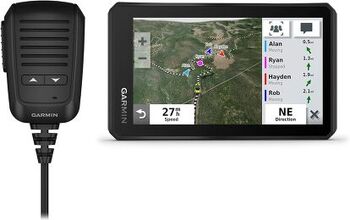NYT Declares UAW Free From "Lordstown Syndrome"
GM’s Lordstown, OH plant was something of a poster boy for all that went wrong with the UAW over the past several decades, reports the New York Times. Poor quality, worker sabotage and crippling strikes led to the coining of the term “Lordstown Syndrome” as a symbol of UAW recalcitrance. Lordstown’s workers were so feisty that they even picketed their own union hall in the 1980s. Now, with the legacy of the Vega hanging over their heads, and the possibility of plant closure only narrowly avoided by securing the Chevy Cruze manufacturing assignment, the members of UAW Local 1112 are singing a different tune. “We were the bad dog on the street at one time,” 1112’s shop Chairman Ben Strickland tells the Times’ Nick Bunkley. “We’ve got 3,000 lives to worry about. The cockiness and the arrogance that we once portrayed — we definitely got a lot more humble.” That, it turns out, is in large part due to General Motors’ spectacular fall from grace.
Strickland explains:
When General Motors had such a big percentage of the market, our fears weren’t there. There wasn’t a trump card that we didn’t pull. Now you’ve got to be careful about pulling those trump cards out because it could be your last. We want G.M. to be successful. We want the U.A.W. to be successful. Making that happen on both sides, that creates security.
Local 1112’s President Jim Graham adds:
Everyone has come to a realization that management is not the enemy, and the union is not the enemy. The enemy is the foreign competition,” he added. “We’re working much, much better with management than we ever have. There’s still problems, but we sit down and work those out.
Who’d have imagined it? But then, who in the UAW of the 1970s and 80s imagined that GM would one day be bankrupt? Like so many of the internal problems that brought GM down, labor issues were largely a product of GM’s sheer size and dominance in the market. The same arrogance that led GM to squander its technological edge and commitment to quality led GM’s UAW workforce to believe that the gravy train would always be there, and that the primary goal was to get a bigger cut of the pie. That sense of certainty that GM would always be a dominant player in the industry has died hard, but with bankruptcy the lesson seems to have been learned. At least by the Lordstown workers the Times spoke to. The contrast between the quotes from GM’s UAW employees in this piece, and the recent re-hashing of the “perception gap” by Bob Lutz shows that even post-bankruptcy, those at the top of the GM organization may still be a little too well-protected from the price of failure.
More by Edward Niedermeyer
Latest Car Reviews
Read moreLatest Product Reviews
Read moreRecent Comments
- TheMrFreeze So basically no manual transmissions in US cars after 2029.I just raised one finger in the general direction of NHTSB's main office. Guess which finger it is!
- TheMrFreeze Wife drives a Fiat 500 Turbo 5-speed (135hp vs. 160 in the Abarth), it's a lot of fun to drive and hasn't given us any headaches. Maintenance on it is not as bad as you'd think for such a cramped engine compartment...Fiat did put some thought into it in that regard. Back seat is...cramped...but the front is surprisingly roomy for what it is.I honestly wouldn't mind having one myself, but yeah, gotta have a manual trans.
- Bkojote Tesla's in a death spiral right now. The closest analog would be Motorola circa 2007.The formula is the exact same. -Vocal CEO who came in and took credit for the foundation their predecessor while cutting said efforts behind successful projects.-A heavy reliance on price/margin cuts and heavy subsidies to keep existing stock moving. The RAZR became a $99 phone after starting out as a $399 phone, the same way a Model 3 is now a $25k car.-Increasing focus on BS projects over shipping something working and functional to distract shareholders from the failures of current products. Replace "iTunes Phone" (remember that?) with "Cybertruck" and when that's a dud focus on "Java-Linux" the same way they're now focusing "Robotaxis".-Increasingly cut away investment in quality-of-ownership things. Like Motorola, Tesla's cut cut cut away their development, engineering, and support teams. If you ever had the misfortune of using a Motorola Q you're familiar with just how miserable Tesla Autopilot is these days.-Ship less and less completed products as a preview of something new. Time and time again at CES/Trade Shows Motorola was showing half-working 'concept' devices. The Cybertruck was announced 5 years ago yet functionally is missing most of its features- and the ones it has don't work. And I mean basic stuff- the AWD logic is embarrassingly primitive. A lot of Tesla hyperbole focuses on either he's a 4D-chess playing genius visionary or all of Tesla's being propped up by gov't mandates. But the reality is this company hasn't delivered any meaningful product evolution in the better half of this past decade.
- Pig_Iron Stellantis is looking for excuses to close plants. Shawn Fain just gave them one. 🐹
- SCE to AUX Unresolved safety issues are a good reason to strike.


































Comments
Join the conversation
Mikey, your story is illustriative, but it brings into question the professionalism of the assemblers. I would not foresee such a thing happening in Europe or Japan, it would mess-up their little white gloves. Actually, the relevant question is, is such a destructive work ethic prevalent in Mexico, how do they work things out with respect to management ? In the book ' Getting the Bugs Out ' (VW) gastly throwing togetehr of the Mexico assembly line model of VW 10 years ago certainly did not convey a whte-gloves professionalism, but, that was 10 years ago.
Interesting the many anti-union, 'They're just a lazy bunch of so-n-sos' opinions I see here, showing how the victors get to rewrite history as they see it. So I'll post a bit of perspective from an article from an English Left wing labour blog: Lordstown had a "track speed of 101.6 cars per hour: one vehicle produced every 36 seconds, by far the fastest rate in the world." "The consequences of this high track speed are worth looking at. Instead of the 'normal' minute (60 cars an hour) to complete an operation, which is bad enough, the worker has only 36 seconds. " "Even if the amount of work to be done is reduced, the job is intolerable, It is even impossible for the worker to pace himself and 'save up' a few seconds by working flat out, so he can scratch himself or whatever, which is sometimes possible on a slower track. The addition of a single spot weld, nut, bolt, or washer to an operation cycle can be the last straw." "Within a minute on the line, a worker in the trim department had to walk about 20 feet to a conveyor belt transporting parts to the line, pick up a front seat weighing 30 pounds, carry it back to his work station, place the seat on the chassis and put in four bolts to fasten it down by first hand-starting the bolts and then using an air gun to tighten them according to standards. It was steady work when the line moved at 60 cars an hour. When it increased to more than 100 cars an hour, the number of operations on this job were not reduced and the pace became almost maddening. In 36 seconds the worker had to perform at least eight different operations including walking, lifting, hauling, replacing the carpet, bending to fasten the bolts by hand, fastening them by air gun, replacing the carpet again and putting a sticker on the hood. Sometimes the bolts fail to fit into the holes; the gun refuses to function at the required torque; the seats are defective or the threads are bare on the bolt. But the line does not stop. Under these circumstances the workers often find themselves 'in the hole', which means that they have fallen behind the line. 'You really have to run like hell to catch up, if you're gonna do the whole job right', said one operator named Jerry. 'They had the wrong sized bolt on the job for a whole year. A lot of times we just miss a bolt to keep up with the line.' " To me it is no wonder there was dissatisfaction with management and it had nothing to do with wages or benefits, also it seem pretty obvious why GMs quality control for the Vega SUCKED! Personally I have never worked in a real factory or auto plant, but I spent 20+ years working as a professional Chef/cook and hence can understand how one can feel if the pressure becomes almost unbearable, especially when there is a danger of injuring oneself! Read the full article here: http://libcom.org/library/lordstown-struggle-ken-weller